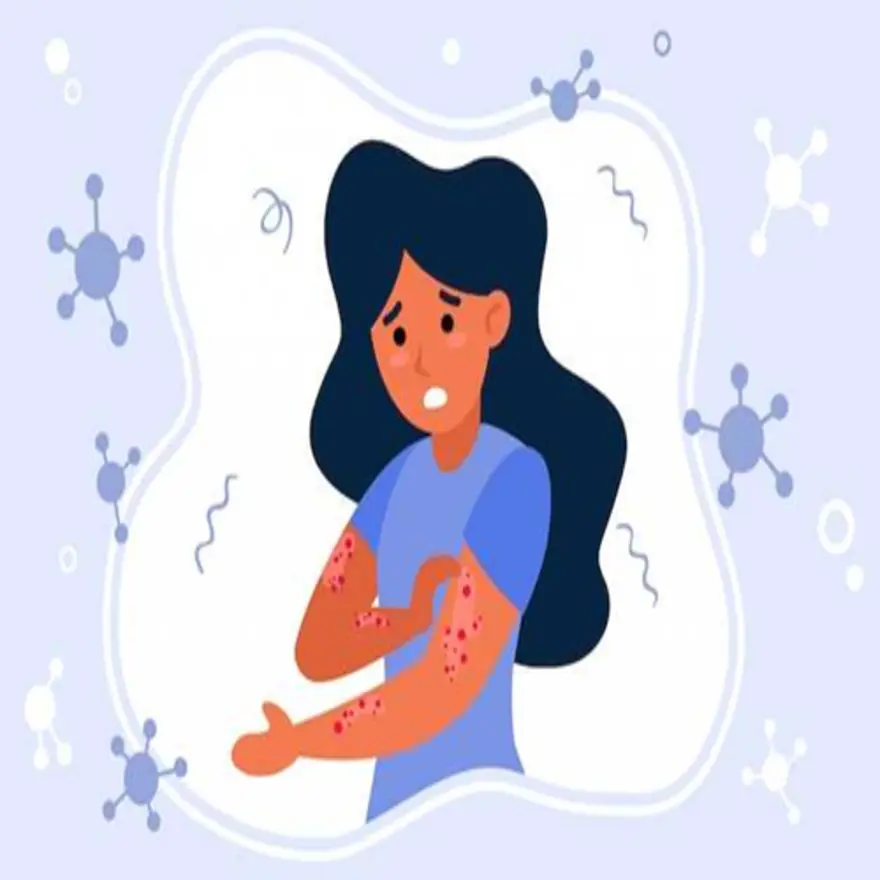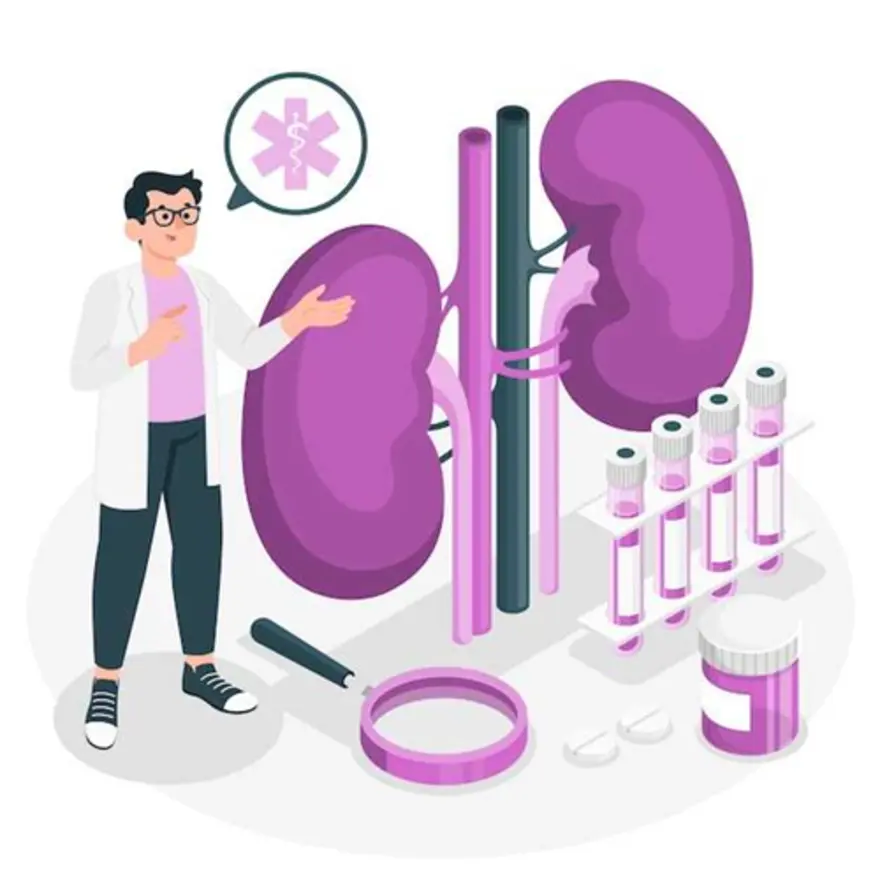Preventive Healthcare
Understanding Muscular Dystrophy: Symptoms, Causes, Types and Treatment
1840 Views
0

What is Muscular Dystrophy?
Muscular dystrophy comprises a group of conditions causing progressive muscle weakness and reduced flexibility.
Types of Muscular Dystrophy
The following are the common muscular dystrophy types noticed-;
- Duchenne Muscular Dystrophy
- Becker Muscular Dystrophy
- Congenital Muscular Dystrophy
- Myotonic Muscular Dystrophy
- Limb-Girdle Muscular Dystrophy
- Facioscapulohumeral Muscular Dystrophy
- Emery–Dreifuss Muscular Dystrophy
- Distal Muscular Dystrophy
- Oculopharyngeal Muscular Dystrophy
- Collagen Type VI-Related Disorders like Ullrich congenital muscular dystrophy, Bethlem myopathy
How Common is Muscular Dystrophy?
Muscular dystrophy is considered uncommon, with an overall prevalence of approximately 16 to 25 per 100,000 individuals in the United States. Duchenne muscular dystrophy stands out as the most prevalent form during childhood, while myotonic dystrophy takes precedence as the most common type in adulthood.
What are the Symptoms of Muscular Dystrophy?
Muscular dystrophy symptoms primarily entail progressive muscle weakness, with specific signs and manifestations varying based on the type and age of onset.
Duchenne Type Muscular Dystrophy and Becker Muscular Dystrophy:
- Frequent falls
- Difficulty rising
- Trouble running
- Waddling gait
- Walking on toes
- Large calf muscles
- Muscle pain
- Stiffness
- Learning disabilities and
- Delayed growth
Other Types
- Myotonic: Inability to relax muscles affects facial and neck muscles.
- Facioscapulohumeral (FSHD): Muscle weakness starts in the face, hips, and shoulders.
- Congenital: Apparent at birth or before age 2, with varying progression.
- Limb-girdle: Initial impact on hip and shoulder muscles
What Causes Muscular Dystrophy?
The following muscular dystrophy causes are commonly reported-;
- Genetic Basis
- Muscular dystrophy causes differences in genes responsible for proteins determining muscle integrity.
- Dystrophin Deficiency
- Changes in a single gene can lead to deficiencies in dystrophin, a crucial protein for muscle function.
- Inheritance Patterns
- Autosomal Dominant
- Inherited from one parent on one of the 22 autosomal chromosomes.
- Autosomal Recessive
- Inherited from both parents on an autosomal chromosome.
- Sex-linked (X-linked)
- Connected to genes on the X chromosome.
- Spontaneous Mutation
- Develops due to spontaneous mutations in genes.
- Autosomal Dominant
What are the Complications of Muscular Dystrophy?
The following are the complications of muscular dystrophy:
- Contractures
- Breathing Difficulties
- Coughing Difficulties
- Swallowing Difficulties
- Heart Disease (Cardiomyopathy)
- Scoliosis
- Osteoporosis
How is Muscular Dystrophy Diagnosed?
The following are ways in which muscular dystrophy diagnosis is done:
- Diagnostic Stages
- Investigation of Symptoms:
- Promptly consult a General Practitioner for symptoms like muscle weakness or mobility issues.
- Family History Discussion:
- Share any family history of muscular dystrophy with the healthcare provider.
- Physical Examination:
- Examining the range of motion in different joints can help identify joint contractures or movement limitations associated with muscle weakness.
- Blood Tests
- Blood tests will be performed as part of the diagnostic process.
- Electrical Tests:
- Nerve and muscle electrical tests are conducted for comprehensive evaluation.
- Muscle Biopsy:
- In some cases, a muscle biopsy involves removing tissue for testing.
- Investigation of Symptoms:
How is Muscular Dystrophy Managed or Treated?
Doctors recommend the following muscular dystrophy treatments:
- Ongoing Monitoring
- Individuals with muscular dystrophy undergo lifelong monitoring.
- Treatment Options
- Medications:
- Corticosteroids like prednisone and deflazacort can enhance muscle strength, but prolonged use may have side effects like Osteoporosis, Muscle weakness, Glucose intolerance, diabetes, etc.
- Heart Medications:
- ACE inhibitors or beta-blockers may be prescribed if muscular dystrophy affects the heart.
- Therapies:
- Range-of-motion exercises maintain joint flexibility.
- Low-impact aerobic exercise and strengthening exercises are beneficial, but consultation with a doctor is crucial.
- Braces aid muscle flexibility and mobility.
- Mobility aids like canes, walkers, and wheelchairs support independence.
- Breathing assistance devices may be necessary, including sleep apnea devices and ventilators.
- Surgical Interventions:
- Surgery may be required to correct contractures or spinal curvature.
- Cardiac devices like pacemakers can improve heart function.
- Medications:
- Adjustable Treatments:
- Ongoing assessments of walking, swallowing, breathing, and hand function allow the care team to adjust muscular dystrophy treatments based on disease progression.
Can I Prevent Muscular Dystrophy?
As muscular dystrophy is genetically determined, there are currently no preventive measures available. However, if you are concerned about the risk of passing on this genetic condition, especially before planning to conceive, consider seeking genetic counselling from your healthcare provider. Prenatal testing may be an option for early diagnosis during pregnancy in certain situations.
What is the Outlook for Muscular Dystrophy?
Living with muscular dystrophy means managing a group of genetic diseases causing progressive muscle weakness and mass loss. Your outlook depends on the specific type, ranging from a normal to a reduced lifespan. Muscular dystrophy symptoms worsen over time, affecting your mobility and daily activities. Therefore, you will need a personalised plan, including physical therapy, medications, and, if necessary, surgery. Regular monitoring and support from your healthcare team are vital for effectively managing the condition.
What is the Life Expectancy of Muscular Dystrophy?
The life expectancy of individuals with Duchenne Muscular Dystrophy (DMD) typically succumb to the condition around the age of 25. In contrast, Becker Muscular Dystrophy generally has a higher life expectancy, often extending into the 30s or 40s. Oculopharyngeal muscular dystrophy typically does not impact life expectancy. On the other hand, Emery-Dreifuss Muscular Dystrophy, developing in childhood or early adulthood, often allows individuals to live at least until middle age.
How Do I Take Care of Myself or Someone With Muscular Dystrophy?
If you are dealing with muscular dystrophy or taking care of someone with the condition, it's crucial to be a proactive advocate. Ensuring the best medical care and maximising access to therapy is essential for the best possible quality of life. Joining a support group with your family can also provide a valuable opportunity to connect with others who share similar experiences.
When to See a Doctor About Muscular Dystrophy?
If you observe indications of muscle weakness, like heightened clumsiness and frequent falling in yourself or your child, it is advisable to consult a physician. The symptoms may differ based on the type of muscular dystrophy, but they typically progress over time.
Conclusion
Muscular dystrophy encompasses a group of genetic conditions causing progressive muscle weakness. Its impact varies by type, with muscular dystrophy symptoms worsening over time. While there is currently no cure, muscular dystrophy treatment options aim to extend mobility and support heart and lung muscle strength. Regular monitoring and a supportive healthcare team are crucial. Metropolis Healthcare stands out as a premier laboratory in the country, offering extensive tests. Renowned for its accuracy and timely results, it excels in various specialised tests, including Enzyme tests, Genetic testing, Muscle biopsy, Heart-monitoring tests, Lung-monitoring tests, and Electromyography.























 WhatsApp
WhatsApp